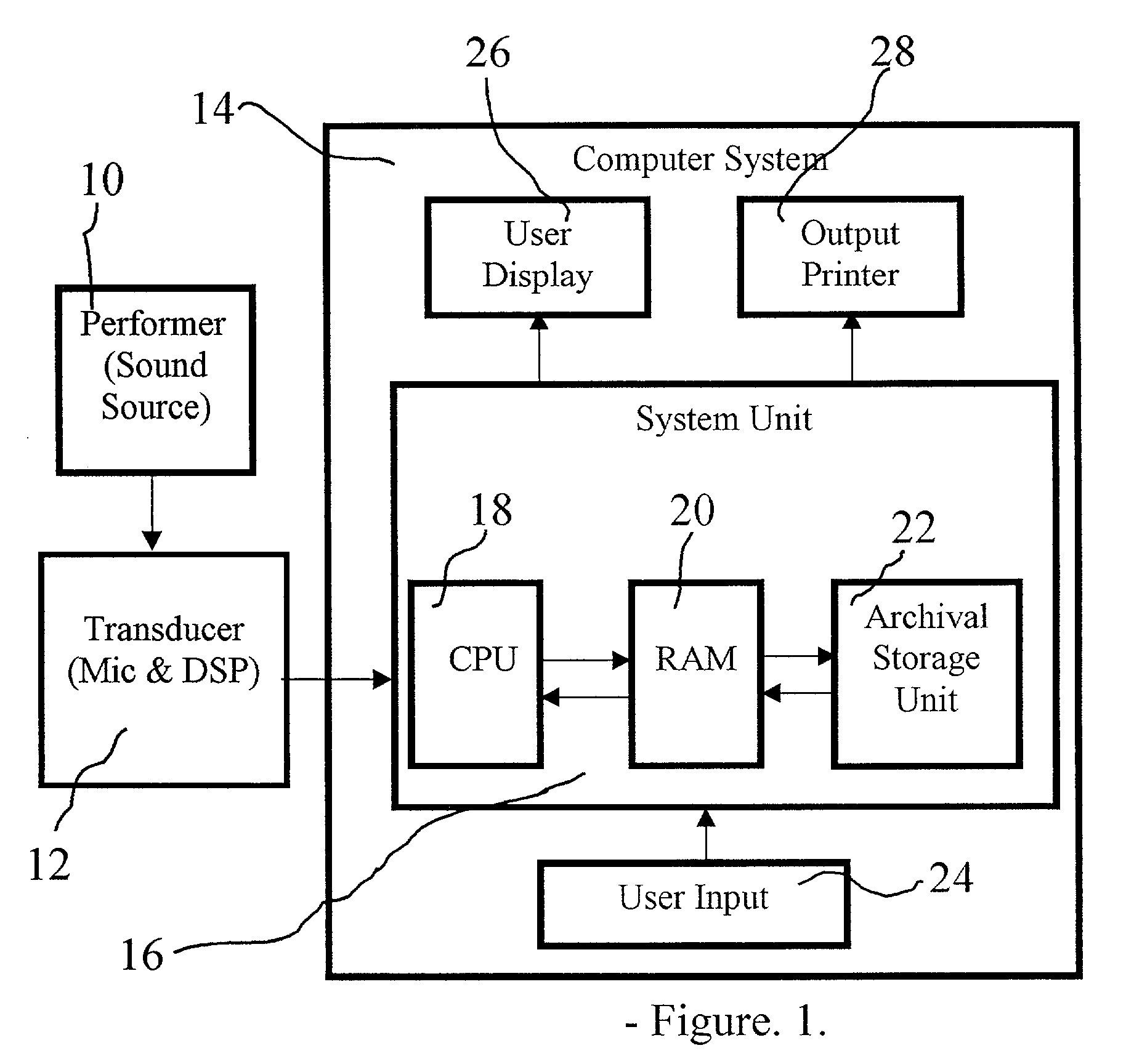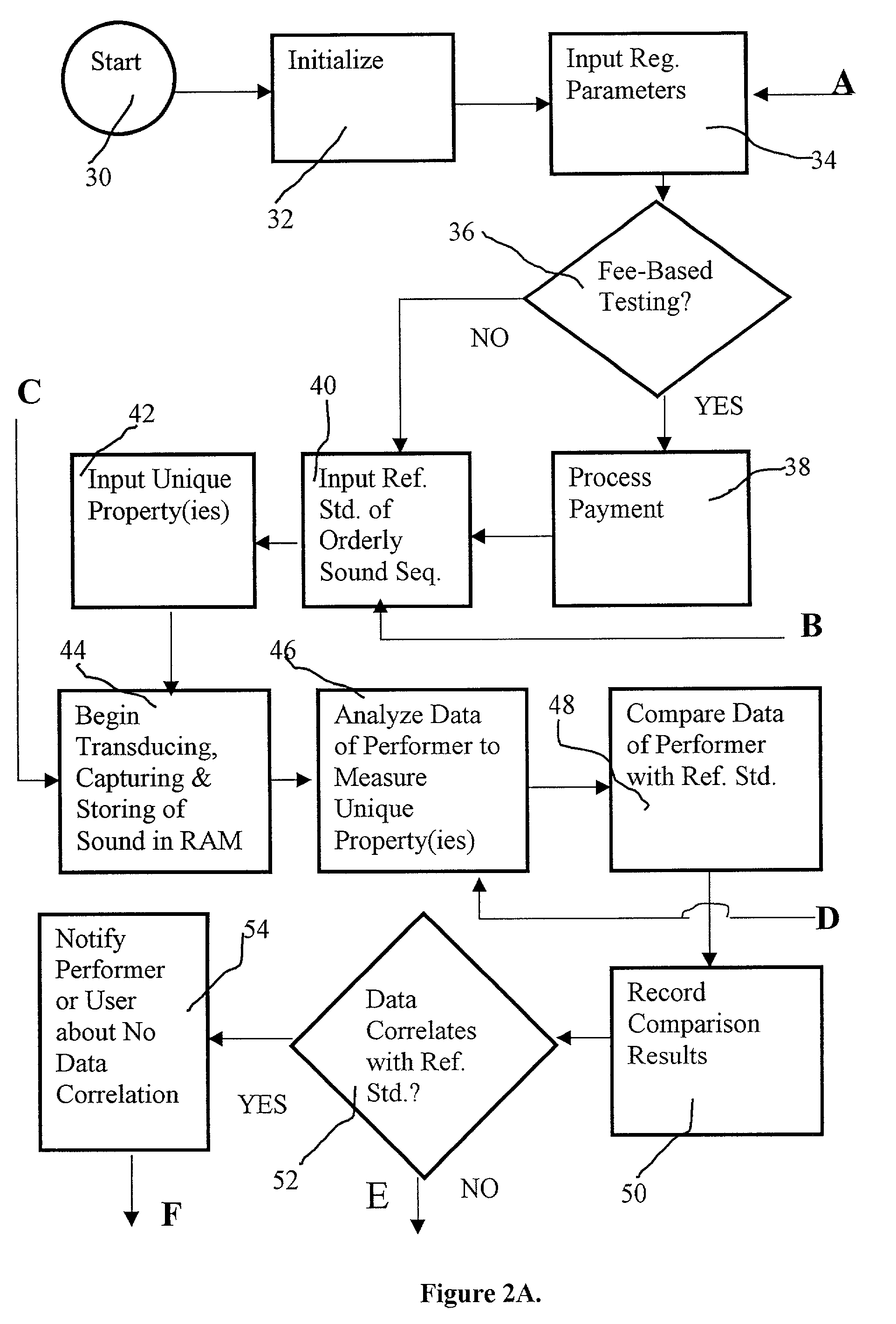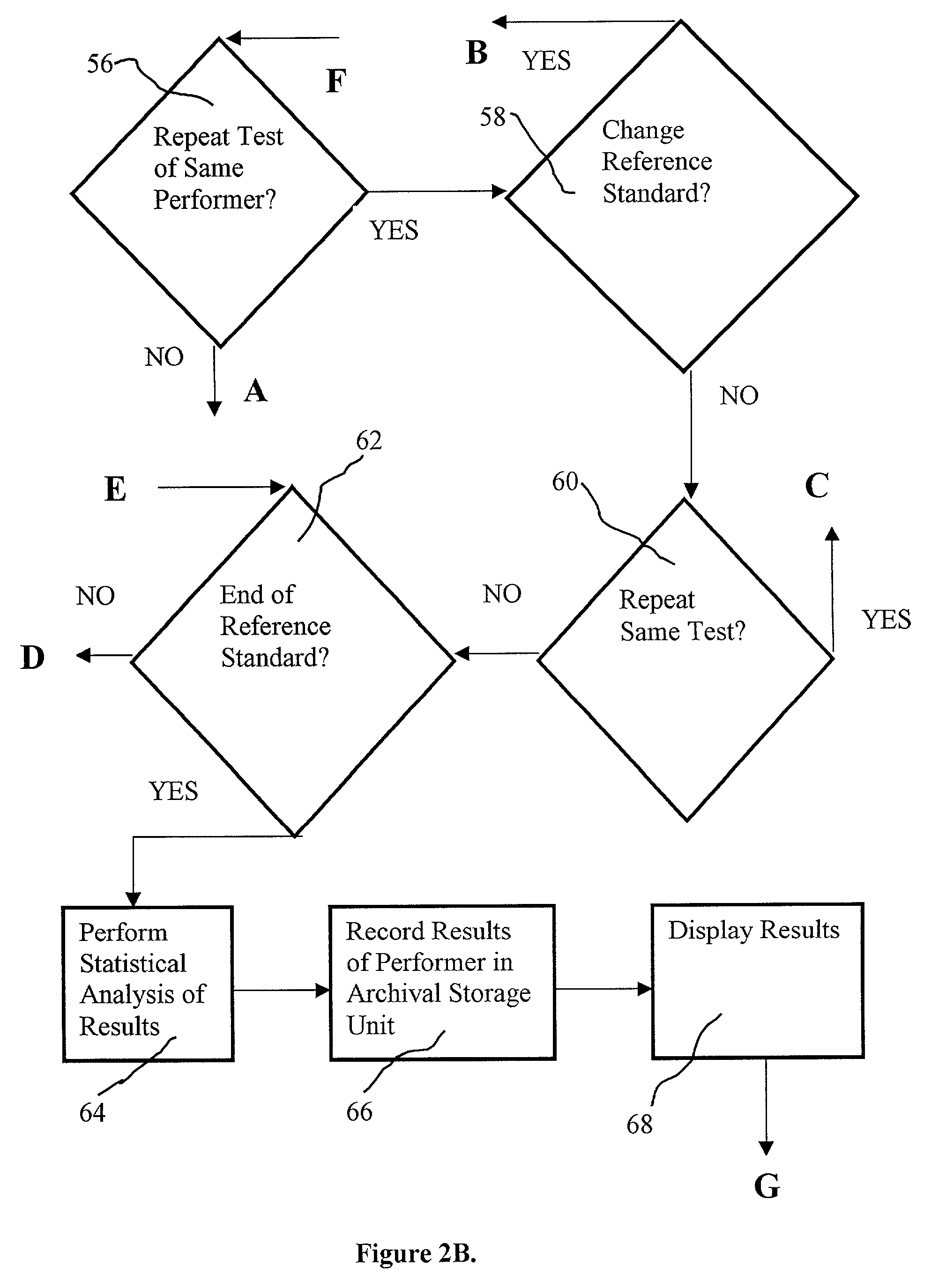Audio-acoustic proficiency testing device
a technology of audio-acoustic proficiency and testing device, which is applied in the direction of music, gearworks, toys, etc., can solve the problems of not being able all existing technology fails to provide a general purpose audio-acoustic proficiency test device, and the presence of a sophisticated and sensitive musical ear is required
- Summary
- Abstract
- Description
- Claims
- Application Information
AI Technical Summary
Benefits of technology
Problems solved by technology
Method used
Image
Examples
Embodiment Construction
[0044] The components of the audio-acoustic proficiency test apparatus accomplish three main objectives. These are: 1) recording or registering the performance of an audio-acoustic test; 2) evaluating it; and 3) reporting on it.
[0045] As shown in FIG. 1, a Performer 10 can be any of the following: at least one living being generating a sound, at least one natural article such as a musical instrument which is manipulated by a living being, at least one natural article which is manipulated by an engaged article such as a robot or musical instrument, at least one human-made article which is manipulated by a living or at least one human-made article which is manipulated by an engaged article.
[0046] A Transducer or transduction system 12 includes a microphone, a Digital Signal Processor (DSP), a Sound Amplifier, Sound Compressor and Sound Filter. These are employed to gather and collect information from the musical performance of the performer being tested and transduce it to System Unit...
PUM
 Login to View More
Login to View More Abstract
Description
Claims
Application Information
 Login to View More
Login to View More - R&D
- Intellectual Property
- Life Sciences
- Materials
- Tech Scout
- Unparalleled Data Quality
- Higher Quality Content
- 60% Fewer Hallucinations
Browse by: Latest US Patents, China's latest patents, Technical Efficacy Thesaurus, Application Domain, Technology Topic, Popular Technical Reports.
© 2025 PatSnap. All rights reserved.Legal|Privacy policy|Modern Slavery Act Transparency Statement|Sitemap|About US| Contact US: help@patsnap.com



